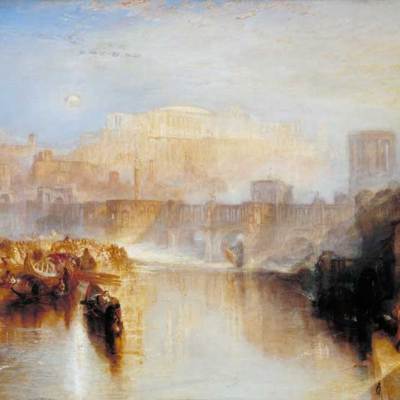Largely overlooked for nearly a century, Christopher Dresser is now recognised as one of the most influential figures in 19th-century design. A rare solo selling exhibition of his work opened this week at the Fine Art Society, New Bond Street. The pieces on display are drawn from the collection of John Scott, one of Dresser’s earliest collectors, and perhaps his most avid. Scott quickly acknowledged the pioneering nature of Dresser’s designs; Dresser’s glass, metalwork, furniture and ceramics are innovative in style, and his design studio was one of the first to produce on an industrial scale for the emerging commercial middle-class market. Scott confidently affirms Dresser to be ‘the most influential designer and theorist of the Victorian Age’ and describes this exhibition as ‘a tribute to his work.’
Click here for a gallery of exhibition highlights
The exhibition is small but the pieces on display and for sale vary widely in date, medium and style. With only a catalogue and no wall text accompanying the eclectic mix of Dresser’s works, the display appears almost as a cabinet of curiosity, each shelf revealing new exotic styles. His works exuberate different colours and forms, and range from armchairs to silver teapots to large ceramic glazed urns.
Dresser studied at the Government School of Design in London, where he specialised in botanical science. Later in his career he spent much time in Japan, and was one of the first westerners to study Japanese arts and design firsthand. He was inspired by their reverence for craftsmen, their ability to turn humble objects into works of art, and their minimalistic style. This interest, and his knowledge of botany, are two clearly apparent sources of inspiration in his works. The range of turquoise-blue porcelains with ‘cloisonnè’ decoration draw on Japanese styles and forms. A shelf of tall elegant glassware take their shapes and brilliant colours distinctly from nature. Such works not only foreshadow Art Nouveau but embody it.
This exhibition, succinct and abundant in range as it is, would benefit greatly from the addition of comparative works of the era; drawing parallels with relatable designers would allow for Dresser’s work to be placed in context. Dresser’s styles were clearly pioneering, as was his embrace of industrial production. In the work of such designers as Charles Rennie Mackintosh and Alexandre Bigot similar styles and forms can be perceived, particularly with regard to the inspiration they drew from nature.
Unlike William Morris and others associated with the Arts and Crafts movement, who opposed mass production and championed handcrafted objects, Dresser saw the Industrial Revolution as a chance to expand the accessibility and market of high-end design. Yet the comparable motifs, colours and forms produced by the studios of Dresser, Morris and Mackintosh suggest their concomitant inspirations and philosophies.
Like Dresser, Morris was a theorist with strong moral ideas about design and construction; both designers believed in ‘truthful’ production methods that didn’t use imitation materials, and designs of ‘Beauty’ that were proven to be timeless – beliefs that are echoed is their product designs. To view the modern works of these late 19th- and early 20th-century movements together would reveal the impact that both new technologies and changing attitudes had on design, as well as the influence that Dresser’s work was destined to have.
‘Truth Beauty Power: the Designs of Dr Christopher Dresser’ is at the Fine Art Society, London, until 2 October.
Related Articles
Art Close to Art: the status of the decorative arts today (Lisa Zeiger)






